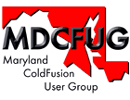 |
 |
 |
|
|||||||||||||||||
 |
|
|||||||||||||||||||
|
 Speakers
Speakers
Charlie Arehart Jo Belyea-Doerrman Tim Buntel Raymond Camden Christian Cantrell Sandra Clark Joey Coleman Sean Corfield Robert Diamond Michael Dinowitz Steve Drucker David Epler Joseph Flanigan April Fleming Ben Forta Shlomy Gantz Mark Gorkin John Hamman Hal Helms Simon Horwith Larry Hull Jeff Houser Chafic Kazoun Matt Liotta Tom Muck Rey Muradaz Nate Nelson Samuel Neff Jeff Peters Bogdan Ripa Neil Ross Margarita Rozenfeld Stephen Shapiro Michael Smith Geoff Snowman Jeff Tapper Dave Watts
|
|
||||||||||||||||||
|
|
| 1 | 2 | 3 | 4 | 5 | 6 | 7 | 8 | 9 | 10 | 11 | 12 | 13 | 14 | 15 | 16 | 17 | 18 | 19 | 20 | 21 | 22 | 23 | 24 | 25 | 26 | 27 | 28 | 29 | 30 | 31 | 32 | 33 | 34 | 35 | 36 | 37 | 38 | 39 | 40 | 41 | 42 | 43 | 44 | 45
Back To Interview list Michael Smith cornered Christian Cantrell (virtually, that is,) about his CFUN- 04 talk, "Flash for CFers." Michael Smith: Christian, why should CF programmers be interested in Flash? Christian Cantrell: The first thing I want to say is that this is not going to be a session about why everything should be in Flash. Flash is just another tool to have in your development toolbox. When specing out a project and trying to solve technical or business problems, Flash offers you entirely new and unique solutions. Flash gives you options and flexibility, and as a ColdFusion developer -- or any type of developer, for that matter -- options and flexibility are very good things. The more options we have, the more clients we can service, the more money we can make, right? MS: Tools are good! So for a particular application, can Flash be combined with ColdFusion or does it replace it? CC: There are very few circumstances where Flash can completely replace ColdFusion. Flash is a client-side technology. It doesn't have the ability to save data in a database without the assistance of a back-end like ColdFusion. This is actually a pretty common misconception. I often see people worrying that ColdFusion is going to be replaced by Flash. That's not really possible. For application development, the two technologies compliment each other rather than compete. MS: I see that Flash uses a programming language called ActionScript. Is that anything like JavaScript? And is it easy to learn? CC: ActionScript is very much like JavaScript. In fact, both languages are based on the ECMAScript specification. It's also not too dissimilar to CFScript. What that means is that if you're interested in learning some Flash, don't let the thought of having to learn a new language discourage you. If you know JavaScript, you already know the syntax, and if you don't know JavaScript, learning ActionScript will mean you are also learning some JavaScript, which will make you a more versatile web developer. MS: I recall that in CF 5 it took a lot of work to integrate Flash and CF. Is that still true in CF MX? CC: With the introduction of components in ColdFusion MX (and their refinement in ColdFusion MX 6.1), the two technologies are very easy to integrate through either Flash Remoting or webservices. MS: Flash remoting sounds a little naughty! Do we all see it in action? CC: No, it all happens automatically out of sight. Flash remoting is a way to pass data back and forth between Flash and ColdFusion (or other technologies like Java, .NET and PHP), which is as simple as calling a function in ActionScript and returning data from a ColdFusion component. Behind the scenes, data is being serialized, sent over the wire, and deserialized, but from a developer's perspective, it's all very simple and straightforward. With Flash MX 2004, the same type of communication can be done with web services, as well. MS: So roughly how many lines of CF code do I need to make this work? CC: A minimal implementation can be done in three lines. One to open a ColdFusion function, one to close the function, and one line in between to return something. Writing components that talk to Flash is no more difficult than writing a standard ColdFusion component. Macromedia has done a remarkable job integrating the two technologies. MS: And on the Flash site is the Actionscript easy to write to talk to ColdFusion? CC: Admittedly, it's a little tricker than the ColdFusion code because Flash uses a concept of "callback" functions, which basically means that you define a function to be called when the data is returned from the server rather than calling the remote function and having the data returned immediately. It's a different model, but actually no more complex once you understand it. You're probably talking between seven and ten lines of ActionScript code. MS: Wow that sounds like I could walk out of your talk and be able to code a simple Flash-ColdFusion application! CC: That's the goal. My session will provide you with everything you need to know. MS: Excellent, I am looking forward to trying out Flash with my CF. Thanks for talking with me. |
 |
|
|||||||||||||||||
| Home | Topics | Speakers | Directions | Spread the Word | Register |
© Copyright TeraTech Inc 2003
405 East Gude Drive Ste 207 Rockville MD 20850
301.424.3903 Fax 301.762.8185 www.teratech.com
Please send comments/questions to [email protected]
For sponsorships or registration, please send comments/questions to liz-cfun04 (at) teratech.com


































